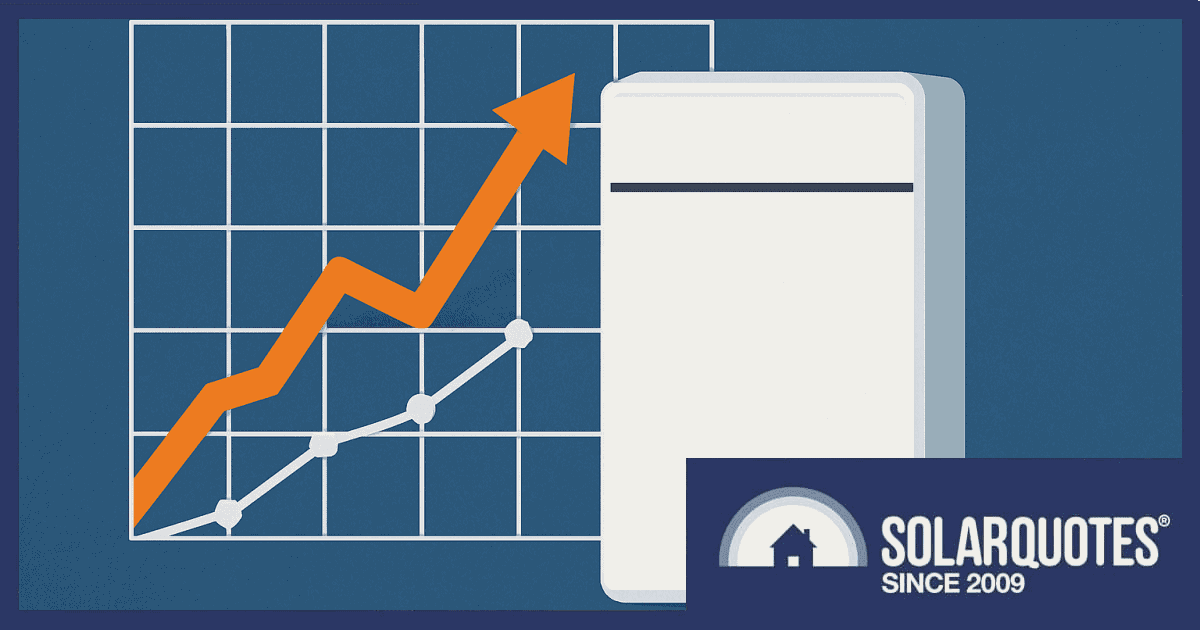
One of the biggest events in Australian home solar will formally kick off tomorrow, but the federal government battery rebate has already made some major changes to the local market.
In early April, Labor announced it would roll out a national battery rebate should it win the election, and since doing so has been scrambling to get its ducks lined up for the launch on July 1 — tomorrow. Last week, the Albanese Government finalised necessary amendments to regulations needed to the get the $2.3bn Cheaper Home Batteries Program in place.
But even prior to this, Australian solar power system owners were getting quotes and having batteries installed after the industry was reassured they could do so and still get the rebate as long as the battery wasn’t switched on prior to July 1. This allowance was to help avoid a “valley of death” for the industry whereby sales enquiries would have dried up between Labor’s election victory and the official start of the program.
The road to this point hasn’t been smooth and given all the moving parts involved, it would have been a surprise if it was. For example, the aim was to make the national government battery rebate “stackable” with state schemes; but various programs ended or were changed. Along with some tweaks to the federal scheme, this led to some battery rebate backlash and disappointed buyers seeking cancellations and deposit refunds.
But even given the hiccups and confusion — not to mention some poor behaviour from a minority of solar businesses and buyers alike — to say there has been great interest in the scheme would be an understatement. Here at SolarQuotes, we’ve processed tens of thousands of home battery quotes in the past few months; matching prospective buyers to trusted pre-vetted installers.
Battery Buyer Economic Priorities
One of the questions SolarQuotes asks on its quoting form is:
“Economically speaking, which battery feature is most important to you?”
It’s a tick-and-flick question with one of three possible responses:
- Lowest bills.
- Quickest payback time.
- Blackout protection.
A battery that will result in the lowest electricity bills isn’t necessarily the one that will give you the fastest payback, and vice versa. For example, a bigger battery to cover a worst-case night-time consumption scenario can push out payback time.
The results have been very interesting. Based on submissions from May 5 to June 28, 2025:
- 39% said lowest bills was most important.
- 17% chose quickest payback time.
- 43% selected blackout protection.
Blackouts can mean big financial loss for some — for example, for businesses in terms of perished goods or downtime. But obviously many prospective home battery buyers put significant dollar value on this aspect as well, even though the mains grid in Australia is (generally speaking) very reliable1.
Battery Installs Eclipses Solar-Only
On most days in the past few months, SolarQuotes has seen the number of quote submissions for battery upgrades and solar + battery installs bypass the total of solar-only submissions for the day. A recent report from solar energy consultants SunWiz indicates our experience hasn’t been an isolated one.
SunWiz says last month saw more battery than PV systems sold in a single month in Australia for the first time. There were 1.4 battery systems for every solar system, and all states and territories have seen major spikes in attachment rates with the exception of Tasmania.
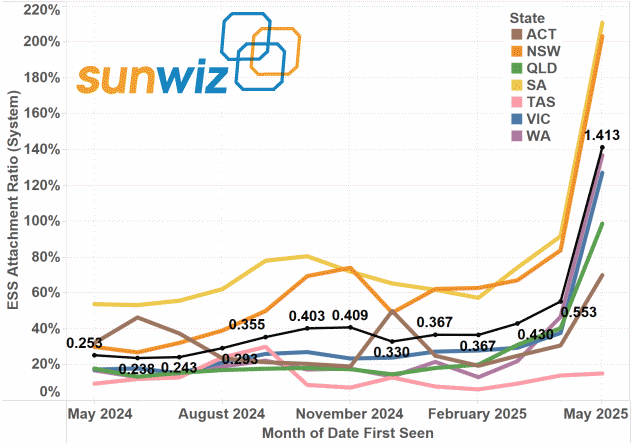
State/territory battery attachment rates
Also:
- The average battery size (capacity) jumped to 15 kilowatt-hours (kWh) in May, which was well above the typical 10kWh.
- Brands that are easy to retrofit into existing PV systems are being favoured.
“Retailers will eventually pivot back to outbound PV+ESS sales — but today’s inbound demand is dominated by retrofit buyers,” says SunWiz founder Warwick Johnston.
And that’s not surprising given more than 4 million solar systems have been installed across Australia to date. While these systems are saving their owners a bundle of cash during the day, during the evening and overnight are a different story without a battery — particularly with the increase in prevalence of Time of Use (ToU) electricity plans that have much higher consumption rates during peak pricing periods.
If you’re still mulling over whether residential energy storage is right for you, check out our comprehensive home battery guide. And you can stay up-to-date with all the latest developments related to the battery rebate by subscribing to the SolarQuotes weekly newsletter, delivered to your inbox each Tuesday.
Footnotes
- The National Electricity Market reliability standard requires at least 99.998 per cent of forecast customer demand to be met each year – (added) but see the note from commenter Alex in the thread below. ↩

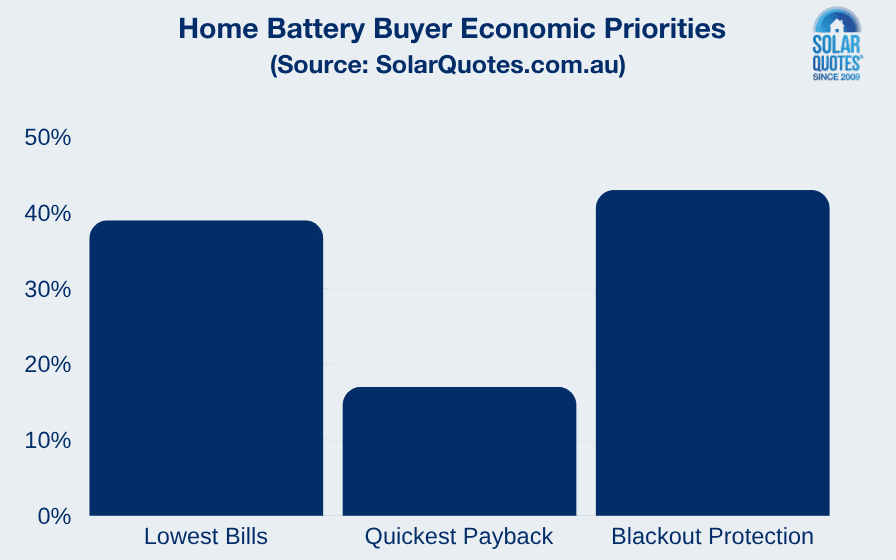
 RSS - Posts
RSS - Posts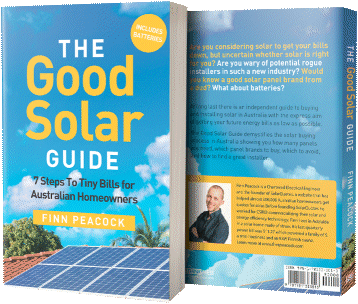


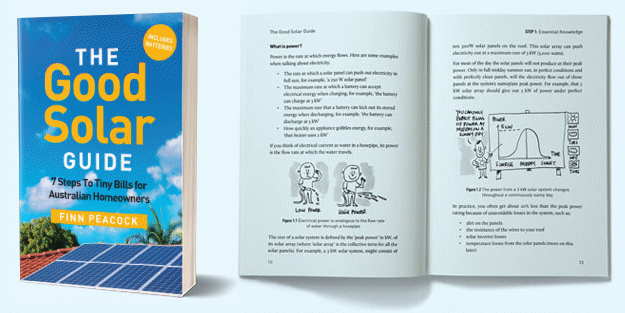
The grid reliability standard has very little relevance to the number, frequency and duration of power outages experienced by homes and businesses.
The standard *excludes* supply interruptions on the power distribution network due to storms, falling trees/branches, errant vehicles etc bringing down power lines/poles or failure of local transformers etc. These are responsible for ~ 98% of all local power outages.
Anyone in regional/rural Australia will be used to the greater incidence of power outages as the distribution network is far more vulnerable to such issues.
Thanks for your comment Alex, I’ll flag it in the related footnote.
Agreed I live in the nsw illawarra and have experienced 5 blackouts since late 2024.
Having only tank water that means no water also no lights, fridge etc.
No more Having doubled my pvc now 13kw and 20kwh Sungrow battery. Seamless change over. Since then didn’t notice 2 short blackouts.
Will get another 5kwh Sungrow added hopefully soon.
This amuses me greatly.
Historically, whenever there were COALition scare campaigns about electricity prices, solar sales would take off.
Their scare campaigns about BLACKOUTS! seem to be driving a lot of battery sales.
My prediction was/is that this scheme will be oversubscribed well before 2030. Maybe the COALition could run a scare campaign about that.
Is it a scare campaign when electricity prices actually went up?
Would it be a scare campaign about the scheme being oversubscribed when you expect that it will be oversubscribed?
Yes. I have yet to see Politicians or the Billionaire media get so excited about the price of KFC. How about explaining to consumers why prices are rising instead of blaming the source of electrons?
Would it be a scare campaign pointing out the scheme will be oversubscribed?
Yes. I actually want consumers to install batteries faster.
Harry, when 100/30*$2.3B = $7.7B is expended locally on batteries in just 4.5 years, that irresistibly accelerates the already rapid¹ pace of getting more for less. By the program’s end, there’ll be no need for subsidy, due both to attractive battery prices and scary electricity prices, as climate remediation more urgently necessitates the renewables transition.
It is only necessary for buyers to demand that nett battery costs drop 30% now, and continue to fall over time.
Even slowpokes who wait long enough to miss out will meet lower future prices. (Compare $18k spent on batteries 1.5 years ago – no subsidy. “Timing in the market” is not just for the stockmarket, I submit.)
¹ Panel prices fell 90% over decades. Batteries are dropping faster – it just seems slow, due to greater need for scale now. 10 kWh is just a nibble.
Why is there a spike at the moment if alleged Coalition scare campaigns drive solar and battery sales? The media rarely mention the Coalition out of government. Are you hearing differently?
Cost shock shouldn’t be driving sales given low power rises.
Is it baseline power worries? Several coal stations are shutting soon, but that’s mostly an NSW issue – Eraring’s 2,880 MW is closing 2027, Vales Point B’s 1,320 MW is closing 2028, and that’s over 50% of NSW’s total coal capacity. Since black coal supplied more than 69% of NSW’s power in the last 12 months, and at times supplied more than 90% …!
Victoria is shutting Yallourn (1,480 MW) in 2028 – 31%+ loss of capacity with brown coal supplying 63% of power in the last 12 months, but up to 85% at times.
Queensland is closing Callide B (700 MW) in 2028, but that’s a less than 9% loss in capacity and black coal supplying over 72% of power in the last 12 months, and at least 77% at times.
Are there state differences in who is buying?
Any current spike is due to battery subsidies
You are kidding about the price rises right? Did you not read the DMO7? Or the media outrage.
My usage charges are going up about 2c/kWh while my daily cost is literally dropping, so no I’m not kidding about a lack of price rises. I’ve previously seen a 50% rise, though I’d have to look up the dates for the precise period – thank you Labor! No it’s probably not entirely fair to blame them, but it happened on their watch. A 2c rise? That’s basically a rounding error in comparison! Is there more coal power in the system keeping prices down, or have companies run out of reasons to increase prices? : – P
This discussion is not about your plan or mine or politics. No one following this space would be silly enough to blame a ‘Party’ for electricity price spikes.
It is about scare campaigns driving consumer behaviour.
So you’ll blame the Coalition for ‘scare campaigns’ driving consumer behaviour but think it’s silly to blame a (Labor) party for electricity price spikes?
You don’t see any contradiction in that, at all?
Maybe it’s a matter of what family, friends, media etc you’re surrounded with i.e. which ‘echo chamber’ you reside in?
I’ve honestly no clue what scare campaigns you’re imagining, they’ve clearly had zero impact on my solar and battery thinking!
You seem to be very confused here George
I can only suggest a cup of tea and nice lie down.
There is no doubt chatter about electricity price rises causes an uptick in interest in solar and now batteries.
The end
We had crazy winter and peak summer usage. This is significantly as a result over having a largish 1980’s Mcmansion with thin leaky windows and dried out shrunken seals and no shade.
Have spent the last 7 yrs working through a tonne of upgrades to reduce our energy intensity.
First up 6.6 pv only system. Then replace gas storage hot water with reclaim heat pump, then roof repairs, solar king vents and painting it arctic white. These changes halved our energy use but it was still really high +$15/day
In following years have spent a lot of time installing patio + removable shade sails to maximise winter gains and summer shade.
These changes have allowed us to set our thermoststs higher in summer (now at 24-25 not 16 degrees) and lower in winter. However still spending ~$10/day on power as stay at home partner likes a warm or cool house
This April to avoid another winter mega bill upgraded solar PV up to 22kw and 16kw battery. Now using just $2day in winter and never been warmer
Hard work, Alex, but yielding big savings for decades to come. Bean counters may quibble about present value of future benefit, but in real life, cutting down outgoings in retirement deeply impacts quality of life. And if you’re not there yet, then prior savings are magic for the mortgage.
Here, I was forced to insulate and double glaze the owner-build, to meet 6 stars (now 7). The result? 23.6°C in the 72 m² living/bedroom area with just 600W into the RCAC, at 12°C outside. No other heating – even the sun’s gone.
Being only allowed to export a maximum of 5kW to the grid on single phase here in FNQ is an incentive for those of us with larger solar systems to install a battery to store the excess power which otherwise is simply discarded.
Also our lengthy periods of heavily overcast weather mixed with several grid outages a year means a bigger battery is better.
I’m glad Alex put up the explainer about how they produce (dare i say rig) the reliability issues data.
Because my experience is at least 3 or 4 lengthy blackouts a year, and as most are late afternoon / evening storm related you are generally talking no power at least overnight, as they (quite rightly) don’t attempt repairs until safe to do so.
This year of course we had an outlier event in Cyclone Alfred where we had no power for 3 days and we were among the lucky. A lot (including my parents) didn’t have power for over a week.
Interesting to see the lack of a peak in the data for Tasmania. I think this may be due to the fact that Tasmania already has batteries, in the form of pumped hydro.
You’re on the right track.
The pumped hydro makes our power cheap – 16.7c/kWh off peak, a little more than double that on peak, and only 8 peak hours a day (3 morning + 5 evening). 8.9c FiT. Prices aren’t changing much for 25/26, just the supply cost.
https://www.auroraenergy.com.au/residential/products/residential-all-prices
And even then, Aurora Energy (our biggest provider) is able to run regular free power offers and the hydro plant makes so much money for the state government that excess profits are passed on to residents.
Last time I ran the calculations it would take far longer than a battery’s warranty to pay for itself. And power has been generally reliable enough in my area that blackout protection won’t help me much either.
I still plan to do it, especially at 30% off, but it’s nowhere near the top of my priority list.
The national electrical grid is too expensive to expand and too valuable to waste. National Grid is $TRILLION to build and 10 decades to construct.
Fossil fuels are 10x grid electricity.
No fossil fueled CO2 emissions then 10x clean electricity. And $10 TRILLION and 100 decades of grid capacity construction. WTF are people thinking.
And then the nuclear generation plant. construction costs and decades construction time frame. And 10 decades to clear the financing and construction debt.
Rooftop PV and v2g EV big battery is dirt cheap electricity at the consumer and no f……ing expensive grid costs. Yes frighteningly expensive grid costs.
Much more to be said but it is late here.
Stephen, grid construction and fossil power stations CivEng UNSW.
It makes me sick to see the nuclear chemists and all the other know nothings mislead the many hopefuls.
🤔
❓
Great news indeed. An excellent program. The more localised storage, the better solar will work, both for homeowners and the wider grid. If we couple this with a lot more larger community BESS, this will help reduce the need for distributed storage outside major urban areas. With the uptake of vehicle to grid technology, this will be another way localised storage can contribute to the energy transition. V2G can also earn significant money for the system owner.
I am an Electrical Engineer, and have taught Renewables for many years and in particular solar.
With a v2g EV usually parked 23 hrs daily and rooftop PV it will be possible to save up to $10,000 annually for decades.
Given high marginal taxpayers will see this as AFTER TAX money for decades.
EVs with massive batteries dwarfing home batteries and with modern battery management technologies, will become FREE mass electricity storage after the sunsets.
All this means that grid supplied electricity will be abandoned by the wealthy heavy energy users. The early adopters.
Grid cashflow will reduce and so supply $kWh rates will increase.
The slow adopters will pay higher supply rates, basically be GOUGED, to maintain grid owners ROI.
Internationally priced gas will also get more expensive for the slow adopters.
Slow adopters, those heavily invested in fossil fuels, those on pensions, those struggling to pay rent, …
The nuclear promoters are an even worse economical solution, nuclear generation that replaces fossil fuels has to build bigger grid capacity.
Grids are 10 times more
You can’t save $10,000 of your electricity annually unless you currently spends $10,000+ on power. How many people actually have bills that ridiculously large?
I agree anyone with wealth, and many of those with savings, will opt to abandon the grid when it becomes cost effective to do so. The question is, when will that occur? And will states opt to adopt a WA approach of charging for a connection going past your place even if you don’t use it so as to prevent opting out? If power is cheap but a connection is expensive you can’t avoid the pain regardless of whether you have solar or not.
Why would nuclear generation require a larger grid than coal? Wind and solar require a web type grid. Nuclear is basically monodirectional. That means simpler, cheaper, and more efficient no?
Those prosumers who are wealthy enough, and community-minded enough, will install enough ESS capacity to be able to feed the houehold maximum into the grid 24 hours/day.
Hopefully there are enough of these to offset the option-scarce energy consumers.
Those who can’t afford this, or prefer our default “every man for himself” British culture, will probably opt to abandon the grid.
Oh absolutely. I periodically look at batteries but for now the only way the cost can be justified is by going off-grid, except going off grid means a larger size battery is required, and the value for money with that just isn’t there either. I know there are folk in my region who are off-grid, but not numbers.
Of course the upside of going off-grid is an end to unreliable supply. This year hasn’t been too bad so far – only a couple of days showing garbage inverter data due to supply issues, other years its more like a dozen or so.
Given ‘high’ FiTs, and low (enough) usage charges, it remains possible to make money by exporting power. Add in government handouts on top and that’s money in the bank. So long as that remains true, the smart money option is to stay connected. Whether the maths will change next financial year, only time will tell. Things could change radically in a mere 12 months!
We don’t get many blackouts in Canberra, and when we had a recent one, I plugged a cable in to the EV so we could make coffee, and have a pleasant hour or so in the quiet glow of the TV or music or whatever!
I am quite keen to supplement my existing Alpha ESS with another 10kWh. My question is whether it makes much difference to mix battery brands – would I be better adding a Tesla or BYD battery, for example.
The current 10kWh system Peters out fairly early in the evening in this climate so hopefully 20 would see us through and maybe enable better utilisation of Amber peaks.
Bill, mixing battery brands buys both the problem of how to report SoC in a single app, and how to manage charge/discharge in some unified way. The tech savvy may wrangle Home Assistant to the task, but that’s more than a little DIY. If you’re into battery feed-in for profit, then good luck … unless maybe export from one, and hoard the other? That sounds workable.
I’d give Sigenergy and other expandable battery banks (BYD?) a look. If Amber yields well, and battery prices fall, you can then scale up just by adding a brick to the stack.
An ad hoc heterogenous battery farm will be like running sheep & cattle, best done in different paddocks, or the cattle can starve.
Here there’s three parallelled 15.5 kWh LiFePO₄ battery banks, for 46.5 kWh, with a pair of battery inverters for redundancy. A modular system is readily expandable – a limited-scope budget consumer system much less so. Future freedom costs future thinking – entirely absent in basic market offerings.
Thanks Erik – I was thinking mixing not a good idea – fewer options when I started! I like the idea of an expandable, stackable system like BYD. And I would rather not expand the Alpha ESS, though I have not had any problems to speak of.
grids are 10 times more expensive than generation plant.
nuclear cannot load follow and so has big limitations for grid stability
nuclear plants shut down rapidly and take days to get back online.
wealthy promoters want to Park Private money in Public guaranteed energy assets for the next century. PPP. For Australia that has meant foreign owners in tax havens.
EVs and rooftop PV can easily be paid by home budgets, eventually.
Wealthy early adopters will build the 2nd hand EV market and build the rooftop industry. Millions of m2 of PV will be needed for the 20 million roofs.
Hello troops.
My next door neighbour, who happens to be a licensed electrician, a renewable devotee and has self installed his own system, panels, inverter and batteries.
The question here is, the company he initially bought his products from have an upgrade sale (selling out batteries and hybrid inverter before the new gear lands in the country)
He has installed and been using his system without fault for 12 months so he is confident it’s working as expected.
The question here is on the government solar/battery rebate available to installed systems.
Do I need to use registered “solar installers” to get the rebate and if no, how prohibitively hard is the exercise?
Thanks for advice..
Regards
Mike
The predicted increase in storm frequency and intensity generated by increasing ocean temperatures will make blackouts a more regular occurrence
☀️ Rooftop Solar & Batteries in NSW: A Hidden Superpower
NSW has the most rooftop solar of any state, with 30–40% of homes now generating their own power.
Rooftop solar already supplies over 10% of all NSW electricity annually, peaking to 30–40% on sunny days.
Virtual power plants (VPPs), home batteries, and EVs with V2G can support the grid without new transmission.
Example: a single Tesla Powerwall can provide peak support more effectively than a gas peaker — with zero fuel and instant response.
💸 Cost Reality
Rooftop PV in NSW now produces electricity for 4–6¢/kWh. Cheaper than coal, gas, nuclear
Grid upgrades to support new central plants cost billions.
Summary: In NSW, the Smart Path is:
1. More rooftop PV and local battery storage.
2. Support for EVs with V2G capability — they’re batteries on wheels.
3. Avoid huge grid expansions and central generation where possible.
4. Reinforce local distribution networks, not long distance transmission.